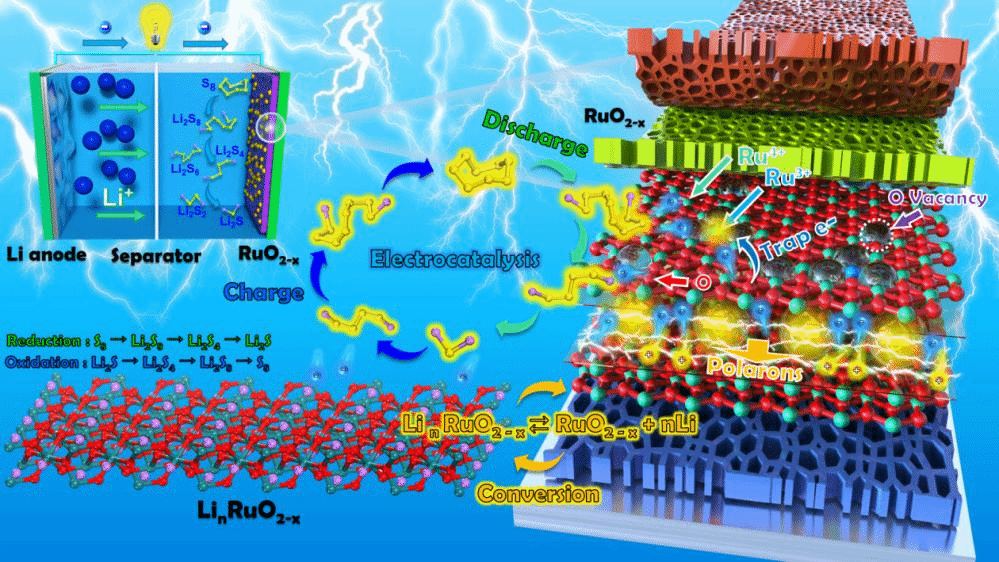
Recently, Professor Xiao Zhubing's research group from the Henan Key Laboratory of Photovoltaic Materials has made research progress in high-performance lithium-sulfur batteries. The article is titled "Polaron Hopping-Mediated Dynamic Interactive Sites Boost Sulfur Chemistry for Flexible Lithium-Sulfur Batteries" and published in the international the journal Energy Storage Materials (impact factor 17.789).
As an ideal alternative for next-generation energy storage batteries, lithium-sulfur batteries have the advantages of high theoretical battery energy density, low cost, and environmental friendliness. However, due to the insulating properties of solid sulfur, the shuttle effect of soluble lithium polysulfides, and the volume expansion during charge/discharge process, lithium-sulfur batteries have low sulfur utilization and poor cycling performance. Owing to the strong chemical adsorption between the oxygen active sites of defective oxides and polysulfides, defective oxides can effectively immobilize the polysulfides, which can effectively inhibit the shuttle effect. The article adopted O-defective RuO2 (RuO2-x) as the sulfur cathode, which can achieve strong chemical adsorption and catalytic conversion for soluble polysulfides mediated by polaron hopping. The homogeneous Li storage mechanism of RuO2-x within a wide voltage range is beneficial for charge transport, and its unique nest structure and high electrical conductivity which does not change with structural bending can promote adsorption of polysulfides. Through density functional theory calculations, the polaron hopping-mediated phase evolution and charge trapping on the dynamic RuO2-x surface further decrease the energy cost of host-guest reaction kinetics in the RuO2-x/S system, which lower the energy barrier and accelerate the lithium-sulfur reaction kinetics. Moreover, the discharge capacity of the flexible lithium-sulfur pouch cell does not decrease significantly after being bent to different angles under high mass loading conditions (7.0 mg cm-2) and an low E/S of 2.8 μL mg-1. After folding back to flat state, the pouch cell still delivers a capacity of 0.34 Ah and maintains high energy densities of 328 Wh kg-1 and 357 Wh L-1.
This work was financially supported by the Scientific Research Foundation for “Special Support Program for Exceptional Talents” of Henan University, Key Scientific Research Projects of Higher Education in Henan Province, Natural Science Foundation of Henan Province, Postdoctoral Foundation of Henan Province, Graduate Education Innovation and Quality Improvement Plan of Henan University, and National Natural Science Foundation of China. The first author of the article is master student Niu Liqun, and Professor Xiao Zhubing is the corresponding author.
Article link :https://doi.org/10.1016/j.ensm.2021.12.039